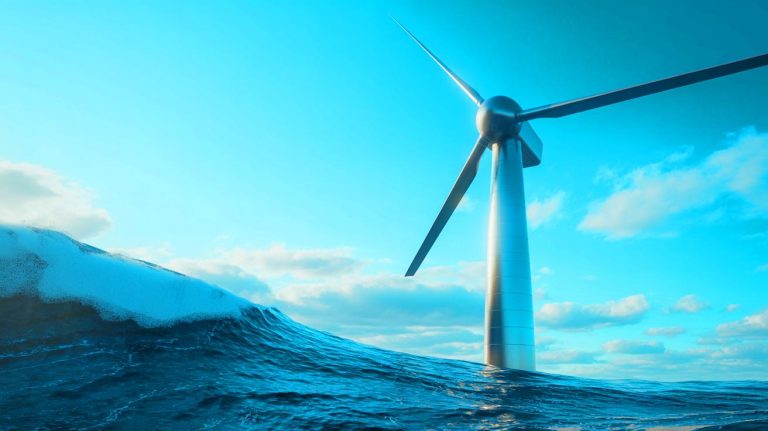| IN A NUTSHELL |
|
In a groundbreaking advancement for renewable energy, China has introduced the world’s most powerful direct-drive floating wind turbine. Developed by the state-owned China Huaneng Group and Dongfang Electric Corporation, this colossal 17-megawatt turbine has the capacity to power 40,000 homes annually. Positioned in Fuqing, Fujian, this engineering marvel is set to redefine how we harness wind energy. Notably, its design allows it to withstand extreme weather conditions, including typhoons and towering 78-foot waves. As it gears up for offshore testing, this turbine symbolizes a significant step towards sustainable energy solutions.
Engineered for the Extreme
The new floating wind turbine is not only remarkable for its size and power but also for its robust engineering. Designed to function reliably in harsh maritime environments, it is built to endure extreme weather conditions, such as waves surpassing 78 feet and typhoon-level winds of level 17. Its unique stabilization system ensures continuous power generation, even under significant platform tilt.
According to Liu Xin, director of the offshore wind division at China Huaneng Clean Energy Research Institute, the turbine is equipped with an integrated intelligent sensing system, offering holistic stability control critical for operation in complex sea environments. Furthermore, the turbine boasts an operational availability rate exceeding 99%, showcasing its resilience and reliability in adverse weather conditions. This achievement is backed by advanced coupling simulation technology and high-fidelity testing models, marking a shift in innovation leadership from Europe to China.
Fully Made in China
A significant aspect of this project is its entirely domestic supply chain. All core components, including blades, generators, and transformers, are manufactured in China. The project also incorporates China’s first large-diameter main shaft bearing, demonstrating the country’s capability in producing essential components locally.
This homegrown approach minimizes reliance on foreign suppliers and aligns with China’s strategic objective of bolstering its clean energy sector. As global competition in floating offshore wind intensifies, China’s self-sufficient technology base provides a significant advantage. This turbine represents a pivotal moment in China’s energy strategy, as nearshore waters offer up to 500 gigawatts of wind capacity, with deep-sea zones potentially offering three to four times more energy.
Unlocking Deep-Sea Wind Potential
Globally, over 80% of offshore wind resources are located in waters deeper than 60 meters, according to the Global Wind Energy Council (GWEC). Traditional fixed-bottom turbines are unsuitable for such depths, but floating systems can be anchored in much deeper waters, expanding the reach of offshore wind energy.
GWEC projects that the global installed capacity of floating wind power will reach 278 megawatts by the end of 2024. Leading countries in this field include Norway, the United Kingdom, China, and France, as they scale up deployment efforts. With early adopters paving the way, the race to dominate the floating wind sector is officially underway, signaling a new era in renewable energy.
As China continues to push the boundaries of renewable energy with its massive floating wind turbine, the implications for global energy strategies are profound. This innovation not only highlights China’s engineering capabilities but also sets a precedent for other nations to follow. How will this revolutionary advancement impact the global energy landscape, and what future innovations will emerge as countries strive to harness the full potential of offshore wind resources?
Did you like it? 4.4/5 (28)








Wow, this is the kind of innovation we need! 🌍 Can’t wait to see how this changes the energy game.
How do they ensure the turbine is stable in such extreme weather conditions?
So cool! Does this mean we’ll have lower energy bills soon? 🤔
China is really leading the way in renewable energy. Impressive! 🇨🇳
Are there any environmental concerns with floating turbines like this?
Can anyone explain how a floating power plant works? I’m curious!
Great achievement! But how long before these become mainstream?
Does this technology have any impact on marine life?
More power to renewable energy! This is the future we’ve been waiting for. 🌱
I wonder how long it took to design and build this massive turbine?
Are there plans to expand this technology to other countries?
Hope they have a good plan for maintenance out there on the water! 🛠️
Wow, 40,000 homes powered without touching land. That’s amazing!
Is it just me, or does this sound like something out of a sci-fi movie? 🚀
Why is this not happening in more countries? Seems like a no-brainer!
Can we expect more such innovations from China in the near future?
This is a game-changer for offshore wind energy. Kudos to the engineers! 👏
How do they anchor these turbines in deep water?
Will this technology reduce our dependence on fossil fuels?
I’m skeptical. What about the costs involved in setting these up?
Does anyone know how much power a typical household needs?
So, how do we get one of these in our country? Asking for a friend! 😉
What measures are in place to handle potential oil spills from maintenance ships?
Can this technology be adapted for other types of renewable energy?
Looks like Europe has some catching up to do! 🌬️
Are there any downsides to floating wind turbines we should know about?
How long does it take to install one of these turbines at sea?
Sounds amazing, but how do they connect the power to the grid?
Do these turbines generate noise pollution? 🤔
How long is the lifespan of a floating wind turbine?
Is this technology scalable for larger cities?
Why don’t we see more news about such positive developments?
What could be the potential challenges in scaling this technology globally?
This is the kind of news that gives me hope for the future! 😊
Can this be a solution for remote islands with energy shortages?
Finally, some good news about energy! When can we expect more? 🌞